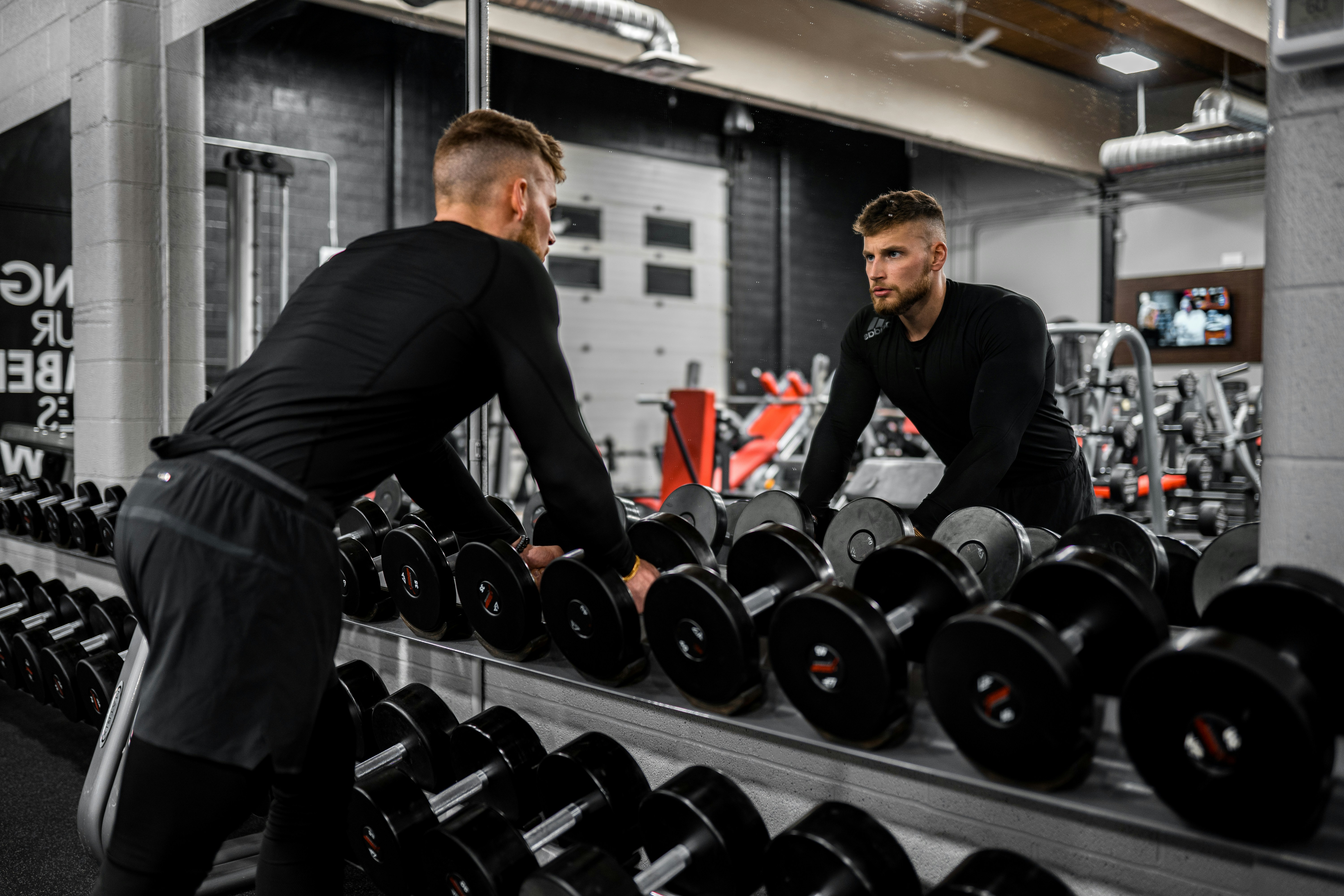
Are Deadlifts Safe?
“Get Stronger, Be Harder to Kill.” - ICE Physio
Introduction:
Deadlifts, or bending and lifting weight from the floor using a hip hinge pattern, are an often-debated aspect of strength and conditioning. You will find people on polar opposite ends of the spectrum. Some firmly believe that deadlifts are evil and should never find their way into an exercise program. Some are deadlift enthusiasts who will go out of their way to pick weights up and put them down everyday.
With that said, here are 4 things to consider when thinking about deadlifting! 👊
1. Deadlifts Are A Normal Part of Everyday Activity

Whether we want to admit it or not, the deadlift, or hip hinge movement, is a common part of most people’s life. If you have back pain, you either endure this movement or you find ways around it. But at some point you are going to drop your phone or wallet on the floor, and be forced to bend over and pick it up. Maybe you have a grabber, or maybe you prefer a squat. But reaching down toward the floor is important for most people’s lives.
Our low back is intended to bend over. The structure of the facet joints (joints that connect the vertebrae together and allow for movement between them) are oriented in a way the makes movement most notably in one direction: Forward and backwards. The low back is meant to do those movements very well. It can do a little bit of side bending and rotation, sure. But the lumbar spine is built for bending forward and extending backwards. (see the video at the end for a more in depth look at what I mean)
The low back vertebrae are also EXTREMELY STRONG AND RESILIENT STRUCTURES. They can withstand tons of load. There's a caveat here tho, and this applies to the entire body…
Many injuries happen because the tissue was overloaded for what is was prepared for. If you’ve never deadlifted before and you all of the sudden try to pick up 200lb several times, you may have some trouble and maybe even some pain. When trying to improve your body's ability to do things, you must start slowly with your weight progression and move up slowly over time.
2. Do We Need to Train Our Back Muscles?

This article (see below for reference) included 8 studies and combined them using statistical methods to determine if training their back muscles was better than general exercise. There were about 200 in each group and performed either “posterior chain resistance training” or “general exercise”. Posterior chain is basically the group of muscles on the back side of us, low back, upper back, hamstrings, etc.
The conclusion: Results of the meta-analysis indicated that 12-16 weeks of posterior chain resistance training had a statically significantly greater effect than general exercise on pain, level of disability, and muscular strength, with no significant difference in the number of adverse events for recreationally active and sedentary patients.”
So, not only did people get better with stronger backs, they didn’t get hurt while doing it any more than the general exercise group.
We know that weak back muscles can sometime lead to back pain. We know that getting back’s stronger helps with back pain. I’ll just leave that there.
But maybe you’re already strong, and you’ve still injured your back. Should you still deadlift?
3. Irritability and Load Management

This is arguably the most important section to read. We’ve established bending over is fine to do, and is really what your lumbar spine is meant to do.
The question most of you really want to know is: What do I do to get better at bending over without getting hurt?
The most important thing to consider is irritability and load management. Irritability just means how quickly do symptoms come on, and how long do they persist after? Someone with high irritability will have symptoms worsen very quickly and persist hours, even days. Someone with low irritability has symptom that take a long time and a lot of stimuli to develop but settle down quickly.
If you are someone who feels more like a high irritability case, then your progression will likely be slower, include less reps/exposures, and lower loads. On the contrary, if you are lower irritability, you may be able to ramp up quicker, perform higher reps or loads, and have more frequent exposures.
Load management refers to how much you are “biting off” so to speak. Here’s an example of bad load management: I stay in my house all winter and don’t do anything physically. My activity has been very low for months. The first day it is nice outside, I need to fix my yard. So I rake for 2 hours, trim hedges for 1 hour, pick up the leaves and brush for another hour. I just went from 0 activity all winter to a massive amount of work, activity, and stress in a very short period of time. We in the biz term this “weekend warrior syndrome”.
There’s two ways they could have better managed their load. Either A. They increased their wintertime activity so that the acute increase in workload was not too far off from their normal. The “spike” in activity would be less aggressive, because they have already established some tolerance to activity. Or B. They break up the work into smaller bits, maybe 30-60 mins at a time over several days. Even so, you may need a day in-between to recover.
Getting back to deadlifts…
If you goal is to get better at bending, you need to start exposing yourself to bending. Maybe you aren’t ready to try and touch your toes. You could always start by bending while you're sitting. But even small exposures to seemingly low intensity activities can build your tolerance over time. If you are already moving weight around during a deadlift, then load management requires you to pay attention to how quickly you are progressing this movement. I personally often keep a similar deadlift intensity for 4- 6 weeks at the time before increasing or changing. Your body will absolutely continue to adapt for 4-6 weeks; you don’t need to increase weight each time.
4. What Do You Want To Get Out Of Them?

Do you deadlift with weight? Do you just practice reaching to the floor? Do you avoid deadlifts altogether? The answer, as if often is, is IT DEPENDS!
It depends because exercises should be selected based on your goals. If your goals are to be a high-level strength athlete, deadlifts are going to be important to you and you should do them.
If you goal is to be able to pick up your child or grandchild, then deadlifting is a great way to prepare your body for this and I would almost call it essential to train. Those kids get heavier and heavier over time, after all!
If your goal is to just be able to bend over to pick up a pen without pain, deadlifts are still important. However, you can certainly get away with squatting or kneeling, if you are not interested in working on simply bending over. It doesn’t matter, it’s what YOU want to do!
See the bottom of the page for tips on starting to add deadlifts to a routine.
Please consider subscribing to the CoreyPod.com Blog
or subscribe to my Youtube Channel:
www.youtube.com/coreypoddotcom
If you need any help with any of the information I've given or the questions I've asked, please email me at [email protected]
*This is not intended to be medical advice. If you are experiencing pain, always consult with a physician.
If you believe this to be an emergency, please call 911 and seek medical attention.
Resources:
Explanation of Lumbar Spine Facet Joints (From Physiopedia)
Ways to Start Deadlifting:
Here is a quick checklist to get you started with your lifts. Remember imperfect action beats inaction, get started and keep moving.
Resources:
Tataryn N, Simas V, Catterall T, Furness J, Keogh JWL. Posterior-Chain Resistance Training Compared to General Exercise and Walking Programmes for the Treatment of Chronic Low Back Pain in the General Population: A Systematic Review and Meta-Analysis. Sports Med Open. 2021;7(1):17. Published 2021 Mar 8. doi:10.1186/s40798-021-00306-w

